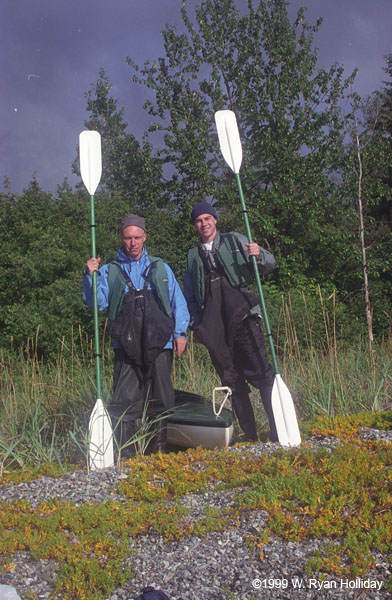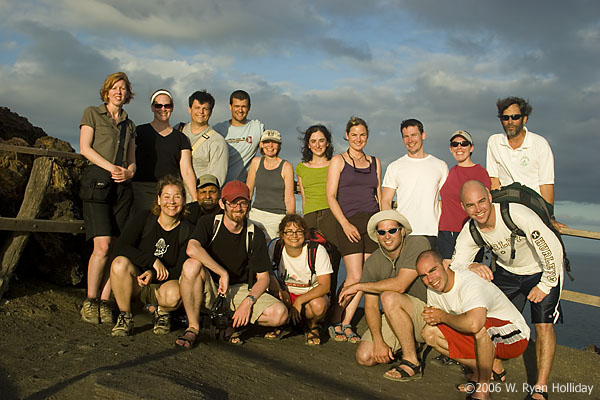Everyone agrees that the country is currently a mess, but there doesn’t seem to be a clear consensus about how to fix things. So here’s the first-draft of the Holliday Plan, which is an if-somehow-tomorrow-I-was-given-the-ability-to-do-whatever-I-wanted thought exercise. Most of the ideas below originated elsewhere, but this brain dump encapsulates those that seem to make sense and that I would want to see implemented. This write-up came about mainly because it’s a subject that interests me, and I’d be interested people’s criticisms, alternatives, and mockery – the comments link is there for exactly that purpose.
The Economy
Getting the economy going would do many things – tax receipts are down $400 billion since 2007 [1] while spending on assistance programs such as unemployment insurance have sky-rocketed. As a result, in addition to the obvious benefit of simply having a better economy, improvement in the outlook would also make a huge dent in the budget deficit.
- Over 577,000 public sector jobs have been cut during the downturn [2]. While some trimming is a good thing, many of these jobs are teachers, police, and other important services. To combat this I’d send $500 billion to the states to use over the next three years however they saw fit, with a hope of reducing layoffs of essential personnel. While deficit spending isn’t a good thing, in a recession it seems like short-term debt is preferable to a longer term recession.
- Borrowing rates are at 1.5%, and with massive unemployment labor is the cheapest it’s been in years. I’d make $1 trillion available for infrastructure over the next three years, with 80% of that sent to the states to use on whatever infrastructure projects they wanted – roads, bridges, public transit, airports, etc. Infrastructure needs to be addressed eventually, so it makes sense to do it now when labor and borrowing are cheap and the economy is in need of jobs.
- Additional tax cuts, business incentives, mortgage restructuring, or other efforts would likely not be worth the costs. Individuals and businesses are saving money right now, so tax breaks will just go into savings rather than back into the economy. Similarly, mortgage restructuring and hiring incentives have thus far proven to have little actual effect.
The Debt
While in the short term the most important thing is improving the economy, over the long term, the US debt and budget deficits are the largest concern. Getting the annual budget into the black and reducing the national debt is an issue that needs to be urgently addressed.
- Expire the Bush tax cuts for those making over $100,000 starting in 2012. For much of the 1980s the top tax rate was around 50% [3], but today it’s 35% – I’d change that back to 39.6%, matching the rate in 2000. Taxes obviously suck, but this would raise approximately $2.7 trillion over ten years [4], and given that income for high earners has vastly outpaced that of the middle class for the past decade, tax rates appear to be unbalanced in favor of the rich.
- The defense department budget for 2010 is $663.8 billion – I would reduce that by 5% a year over the next ten years (adjusting for inflation), which would lead to a budget of $418 billion in 2022 (again, adjust for inflation). That’s still four times as much as the next biggest spender (China) budgets for its military [5], and at just five percent per year the reduction should be gradual enough to allow the military time to adapt. Assuming spending would otherwise have simply matched inflation, this saves $1.3 trillion over ten years ($6.6 trillion vs $5.3 trillion) and $250 billion every year thereafter. Defense is important, but the US doesn’t need to spend six times as much as its nearest competitor.
- The US spends 16% of GDP on health care, while most advanced countries are closer to 10% – Canada and the UK, which have government provided healthcare, spend 10.1% and 8.4%, respectively [6]. There seem to be a few specific things that cause the problem:
- Lack of competition. Insurance is managed at the state level, creating fifty different bureaucracies. At the national level, the federal government does not negotiate drug prices for Medicare and does not allow individuals to buy drugs from other countries such as Canada.
- Lack of price transparency. Since people with insurance simply get their health care covered or get a bill after payment, there is no incentive for them to choose more cost-effective treatments.
- Ineffective use of resources. Prevention is cheaper than treatment, end-of-life care often exceeds what the patient would want due to lack of pre-planning, and there is no incentive for healthy living.
- Lack of experimentation. People like Dr. Atul Gawande have demonstrated interesting ways of reducing costs while improving care, but the system is not set up to encourage these types of programs.
The problem is too complex for anyone to know how best to address these issues, so given the chance to actually make a change as much informed advice as possible would be needed, but some possibilities should include:
- Allow anyone to buy into Medicare (aka the public option). Anyone wanting private insurance could get it, but leverage the federal government’s buying power to lower costs for everyone else. Studies, as well as current costs, show that the private health insurance market isn’t operating with the efficiency and downward pricing pressures of most other private markets, so admit that and let the non-retired crowd take advantage of the government’s buying power.
- Allow purchase of drugs from other countries, subject to existing laws on prescription medication and illegal substances. Similarly, allow the federal government to negotiate drug prices for Medicare.
- Establish national insurance standards and let any state choose to either use their own standard OR to adopt the national standard, with the goal of allowing insurance companies to compete across state borders and to reduce administrative costs.
- Encourage prevention. Allow health insurers to provide discounts similar to what auto insurance companies provide, such as discounts for staying within a certain weight range, discounts for getting regular checkups, discounts for immunizations, etc.
- Create a special court to handle malpractice. While high-end estimates of the cost of malpractice are that it accounts for only three percent of total healthcare costs [7] (and note that much of that may be justified), making it simpler to get rid of frivolous cases in order to reduce abuse of the system should be a goal. The system should protect patients against negligence, but must also recognize that doctors generally do their best under difficult circumstances.
- Encourage experimentation. This goal would be the most difficult to implement, but if a health care system can find ways to reduce costs while improving service there should be fewer barriers that would prevent them from doing so.
While it’s impossible to put an exact savings amount on the above proposals, since 2010 federal health care spending was $1.1 trillion, and GDP is $14.1 trillion, just a ten percent improvement would save $110 billion annually in the budget and free up over a trillion dollars each year in the broader economy for other uses.
- All of the budget cutting deals over the past two years have focused on non-defense discretionary spending, which is nineteen percent of the total budget [8]. This portion of the budget includes everything from air traffic controllers to national parks to foreign aid to roads, and while there may be some room for more cuts, overall any additional savings would be insignificant when compared with the three items already mentioned.
Other Changes
Infrastructure needs repair, the government needs to work more efficiently, and other changes need to happen to make the US a better country.
- Implement a commission to reduce the size and scope of the federal government. Model it on the Base Realignment and Closure process which recommended military bases for closing. The goal would be to trim waste, eliminate duplication, and identify functions that are candidates for moving to the private sector, with the process repeated every three years.
- Implement a similar commission to recommend consolidation and simplification of existing federal laws. No one will deny that the system is too complex, but there doesn’t seem to be incentive for lawmakers to clean it up. If there are duplicative, outdated, or conflicting laws there should be a process to make things better. Hopefully as a side effect this process would also reduce the load on the judicial system while making things fairer for those without vast legal resources.
- Begin the process of simplifying the tax code. Gradually (over many years) eliminate all deductions, including charitable and mortgage, with corresponding decreases to tax rates to keep revenue levels the same. Similarly, gradually increase the capital gains rate until they are taxed like regular income. Complexity encourages cheating and fraud while making the system unfair to those without teams of accountants, but changing things too quickly would also cause economic harm to those who bought a home or invested based on existing tax law.
- Implement financial reforms with a goal of simplifying the current system. The financial industry should encourage investment rather than risk taking, so the Glass-Steagall Act should be reinstated so that banks are not also operating as investment brokerages (obviously, provide sufficient time to allow companies to divest). Commodity trading should be modified so that those actually taking ownership of goods are the focus of the market, rather than speculators who will never take physical possession of the commodity in question. Per-transaction fees should be implemented to increase the cost of high-volume, short-term trading while simultaneously funding regulators – day trading does no good for the country whereas long-term investment boosts economic growth.
- Increase the federal gas tax from 18.4 cents per gallon by five cents per year over the next four years (to 38.4 cents per gallon), and then increase it by the inflation rate each year after that. The tax would still be far lower than most European countries, and would increase revenue from the current $25 billion per year to about $55 billion per year. That money would then be used for infrastructure and energy investments – everyone is aware that infrastructure is crumbling, so there needs to be money available to improve it.
- Tie the minimum wage to inflation – if the minimum wage is supposed to provide a minimal standard of living then it should keep up with cost of living.
- Make narcotics policy a state issue rather than a federal issue. If California wants to legalize pot while Alabama wants smoking a joint to be a jailable offense, so be it. If Las Vegas decides that legalizing cocaine is the best way to manage a drug that is already widely used in that city, let them. Just as prohibition enabled organized crime without reducing alcoholism, the war on drugs has done almost nothing to reduce drug usage but done much to enrich gangs and other criminal elements; end it, reduce the associated crime and law enforcement costs, and allow the drug trade to be moved from the shadows to a place where it can be regulated.
The Political System
Currently just nine percent of people think Congress is doing a good job [9]. No one trusts politicians, good people don’t want to be involved in politics, and citizens think their elected officials have been bought by lobbyists. Obviously, something needs to change.
- Eliminate gerrymandering and have non-partisan commissions draw district borders. This isn’t something that can be done at the federal level, but if it was done it would be the single greatest step possible towards making the political system less polarized.
- Pass laws requiring that any individual or corporation that engages in political activity disclose their financial involvement, similar to the warnings about side effects that are required for prescription drug advertisements. If the Supreme Court says that a union or Karl Rove’s friends can spend millions for political advertising, let them, but make it very clear who the messenger is.
- Establish a precedent in Congress that changes to the House or Senate’s rules cannot go into effect for two years. This would reduce changes made for partisan gain, such as the “nuclear option“, but still encourage fixing particularly egregious abuses of rules, such as the current situation in the Senate where everything is filibustered.
- Allow internet voting. While there would obviously need to be safeguards put in place to make sure hackers couldn’t significantly affect voting and that votes were auditable, there should be no reason in the 21st century that someone should have to travel to a polling place, stand in line, and then physically mark a ballot in order to cast a vote. This change would give those with busy lives, particularly the non-retired crowd, no excuse for failing to vote, and would hopefully make the electorate more representative of the actual population.


